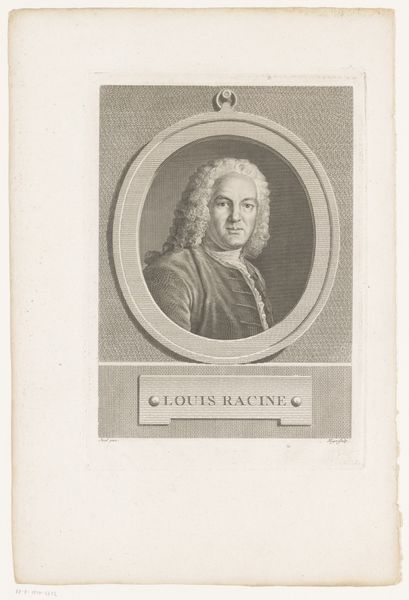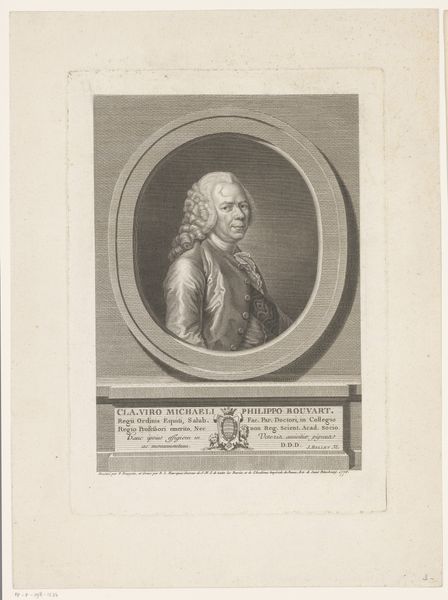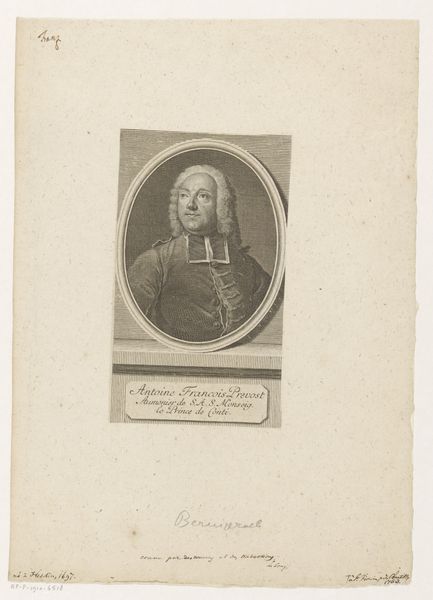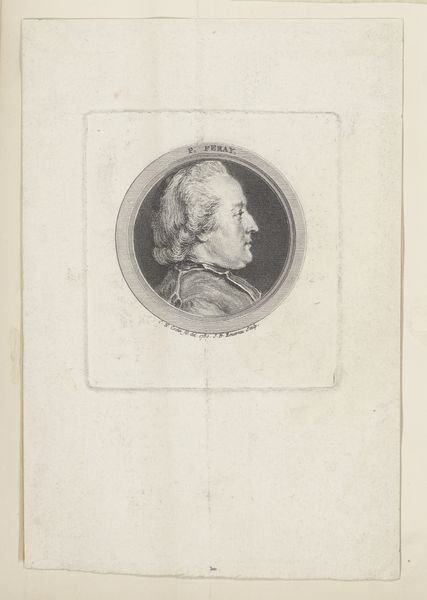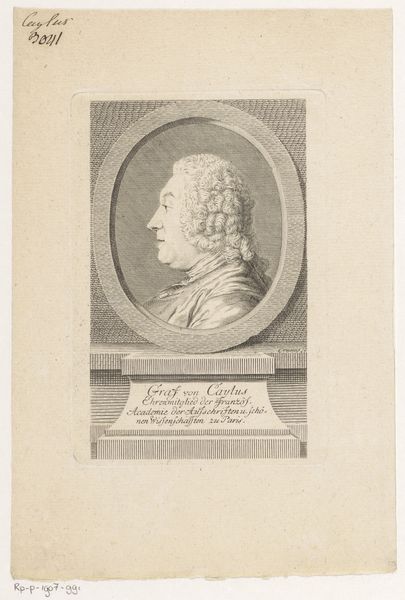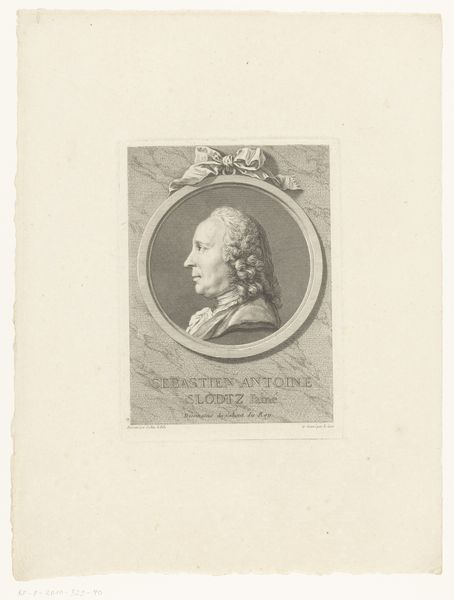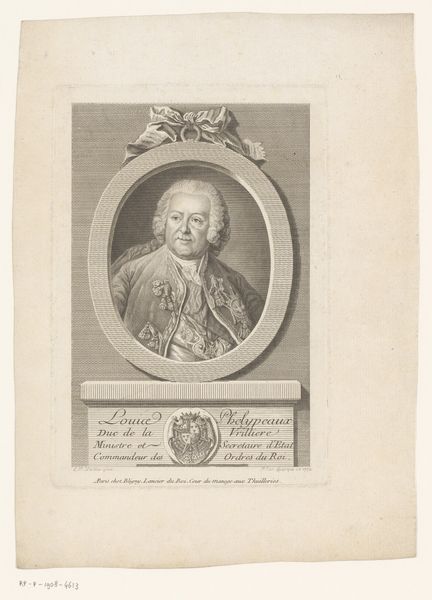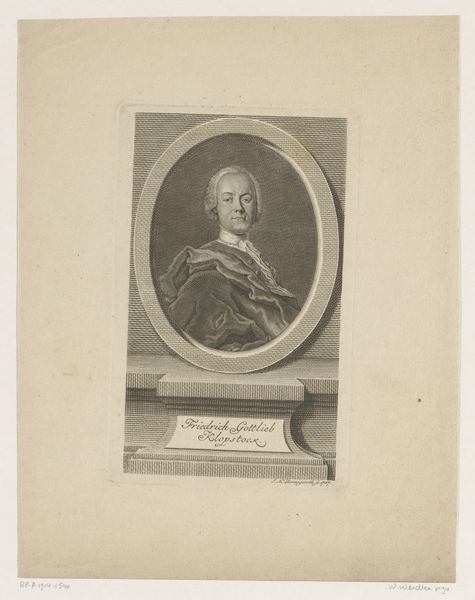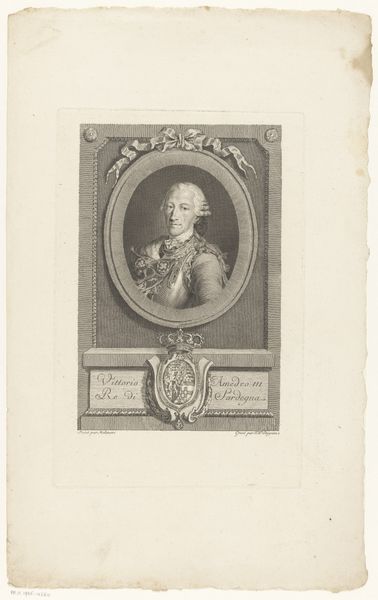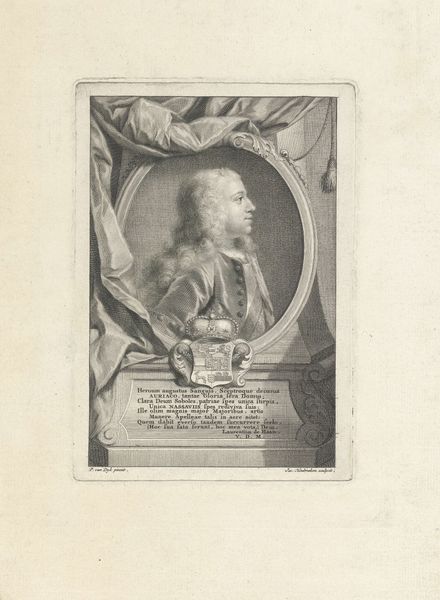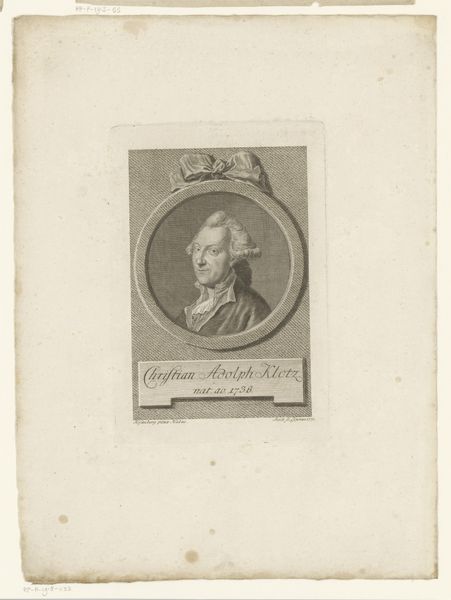
Dimensions: height 264 mm, width 185 mm
Copyright: Rijks Museum: Open Domain
Editor: Here we have Jean Charles Le Vasseur’s engraving, "Portret van Jean (I) Restout," dating somewhere between 1744 and 1816. The intricate lines and monochromatic tones create a rather formal, almost austere, impression despite the baroque flair. How do you approach an engraving like this? What details stand out to you from a purely compositional point of view? Curator: This print demonstrates the power of line and texture to define form. Observe the artist's strategic deployment of hatching and cross-hatching. These create subtle tonal gradations, defining the contours of Restout's face, clothing, and hair. Editor: So the interplay of light and shadow isn’t just representational, but fundamentally structural? Curator: Precisely! Note, too, how the circular frame isolates Restout. This compositional choice concentrates the viewer's focus, while also referencing the tradition of portrait medallions. It’s a conscious play with form. Moreover, consider how the directionality of lines influences visual rhythm and, hence, guides the viewer's eye throughout the composition. Do you observe any diagonal lines within this portrait that suggest movement? Editor: I see how the lines flow from the top of his hair down to the paintbrush and palette, drawing your eye across the image. Curator: Exactly! So, what does this linear construction communicate to us beyond the mere likeness of a person? Editor: It shows how a composition's linear structure shapes perception, emphasizing movement, framing, and ultimately, meaning. Curator: Indeed. Hopefully you can take such lessons and look for the same structure in any kind of artwork.
Comments
No comments
Be the first to comment and join the conversation on the ultimate creative platform.
